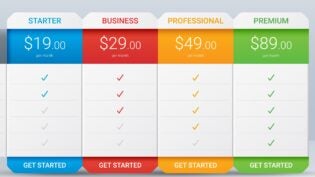
Trial programs come in all sorts of shapes and sizes. They can be highly customized demos or benchmarks. They can be installing equipment or systems at a customer site, letting them use them for a period of time. They can be the free downloads we hope will entice customers to continue using long after the trial period has extended.
Many sales people leverage these as a kind of “puppy dog” close, thinking if they can just shoehorn the product into the customer in some ways, it will never come out. I seldom see these working. In customers leveraging software download or free months on web delivered services, the number of customers that end up using them on and ongoing basis and paying for it is painfully small. (Though marketing likes it, because they proudly report them to the world as users/subscribers.)
Trial programs are often critical as part of the customer buying process. But too often sales people and customer don’t leverage these programs correctly. As an example, some years ago, when I led a large sales team selling very complex analytic equipment, the sales people would commonly “drop off” a piece of equipment for the customer to use for a month. They’d take the box to the customer, help set it up, quickly show them how to use it, then say “good luck and god speed.” A month later they would pick it up, often, it had been collecting dust in the corner of an engineering lab, sometimes it had been used, but most of the time the trial didn’t result in a sale—at least as a result of the trial.
Since then in dozens of clients I’ve seen similar things—whether it’s equipment, complex systems, software, web delivered tools. We and the customer enter the trial too casually, and the trial does nothing to move the buying or selling process forward.
If we are going to leverage trial to their full potential for customers and to help us sell, then we cannot be casual about our trial programs. The investments we and the customers are making in equipment, resources and time are too large to be aimless about what we have to achieve. We and our customers must be very purposeful—we need to have a plan:
- What is it we hope to learn in the trial?
- How are we going to use the trial to do this?
- What outcomes/results do we expect as a result of the trial?
In committing to a trial, we need to sit down with the customer, develop and document the plan. Customers may not know how to do this, they may not know how to structure what they are doing with our products to discover what they need to discover. They may not know what outcomes they expect to achieve—are they looking for certain throughput levels, are they looking for certain functionality, are they assessing performance capability are they looking at quality, are they assessing ease of use, and the list can go on.
So we need to help them develop the plan for what they want to learn and how they will do that over the next 30—or whatever days. It may be the trial is the wrong vehicle to help them discover what they need to discover.
As a sales person, I certainly don’t want to invest in a trail without knowing, “What happens after we are successful in proving what you need to prove?” If we are successful, I want them to buy. In the very least, I want to know the next steps to getting a purchase. I want to know the trial is part of that process of moving forward.
So what if the customer won’t commit to a plan or the next steps?
I’d seriously question the value of entering into a trial. If the customer won’t commit to a plan, then how will they know whether the trial helps them or not? If they won’t commit to next actions as a result of a successful trial, then are they really serious about our solution?
In all my experience, customers embrace this process! They recognize it’s an investment of their time and resource. They want to make sure they aren’t wasting time and not achieving their goals. The problem is, since the solution is often very new, they don’t know how to develop the evaluation plan.
This process becomes even further complicated if the customer is doing side by side trials with your competition. As a sales person, I don’t want to leave the successful outcome for that trial to chance.
What about the web downloads, or the 30 day free use of a web based service? These happen in the hundreds to thousands. How do we support customers in having successful outcomes to those trials? How do we help them move forward in their evaluation, hopefully resulting in a subscription or purchase at the end of the trial?
Lot’s of companies do this pretty well. When I try out a new web service, I get a welcome email. I might get daily or weekly emails suggesting things I might do or functionality I might test. A client recently put together a white paper with a project plan template to help the customer think about what they wanted to achieve in their trial—the good new is those people clicking on that link gave my client an indicator about who, among the thousands of download request they got, was really serious about the product.
So trial can be very powerful in helping the customer and us accelerate our buying and selling processes. But we can only leverage that power if we work with the customer in developing a plan, and understanding what’s next. Absent this, I’m afraid trials are a pure waste of time, resource, and money for both the customer and us—and it’s better not to do it.
This article was originally published by Partners in Excellence
1956 Views












